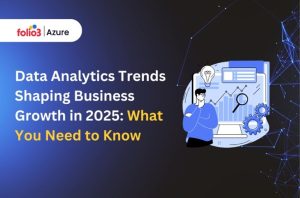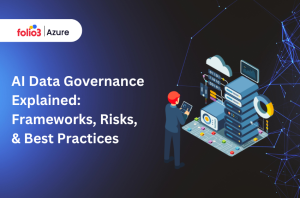Table of Contents
ToggleIn the fast-paced, data-driven world of 2023, businesses must adapt and evolve to stay competitive. Data strategy, once a buzzword, is now an indispensable part of any successful commercial operation. A well-crafted data strategy can be the key to unlocking valuable insights, increasing efficiency, and making informed decisions. In this article, we’ll explore the key components of a successful data strategy and why they matter in the modern business landscape.
Introduction
In an era where data reigns supreme, having a robust data strategy is not just a nice-to-have; it’s a necessity for any business looking to thrive and outpace the competition. The rapid evolution of technology and data-driven insights requires a structured and comprehensive approach to data management, analysis, and utilization.
What is Data Strategy and its Importance
Data Strategy Defined
Data strategy is a carefully devised plan that outlines how an organization collects, stores, manages, analyzes, and leverages data to achieve its goals. It’s a blueprint for harnessing the power of data to drive decision-making and enhance business processes.
The Importance of Data Strategy
In the commercial landscape of 2023, data strategy is more critical than ever. It’s the compass that guides organizations in a world saturated with information. Here are a few reasons why data strategy is essential:
- Competitive Advantage: Organizations that have a meticulously crafted data strategy gain a distinct competitive advantage. This strategic approach empowers them to swiftly and precisely make data-informed decisions, setting them apart from their competitors.
- Efficiency and Productivity: A well-crafted data strategy acts as a guiding light, harmonizing all data-related operations within an organization. It serves as a roadmap that eliminates redundant tasks, ensuring that every effort is purposeful and efficient. Through this streamlined approach, data management becomes a well-oiled machine, optimizing resource allocation and enhancing overall productivity.
- Innovation: Data strategy serves as the catalyst for innovation, empowering companies to venture into uncharted territories of data utilization. This innovation extends to enhancing product development, redefining customer engagement strategies, and so much more. By tapping into the wealth of data at their disposal, businesses can uncover fresh insights and opportunities that lead to groundbreaking advancements and enhanced customer experiences.
- Risk Mitigation: A comprehensive data strategy encompasses robust data governance and stringent security measures. These key components act as a shield, significantly diminishing the potential risks associated with data breaches and ensuring strict adherence to regulatory compliance standards.
Now, let’s delve into the key components of a data strategy that are crucial for success in 2023.
Key Components of Data Strategy
Clear Business Goals and Objectives
Any effective data strategy starts with clear and well-defined business goals and objectives. Without these, data can become overwhelming, with no clear direction. To align data strategy with business objectives:
- Identify Objectives: Clearly defining your data-driven objectives is the first step to success. Do you aim to enhance customer service, achieve cost savings, or explore new market opportunities through data utilization? Clarifying these goals sets the course for your data strategy’s effectiveness.
- KPIs: Create a set of Key Performance Indicators (KPIs) specifically tailored to your objectives. These KPIs will serve as your compass, guiding you as you monitor and assess your progress toward your strategic goals.
Data Integration & Interoperability
For data to be truly useful, it needs to flow seamlessly between different systems and departments. This requires robust data integration and interoperability:
- Connect Systems: It’s imperative to establish seamless communication between your diverse data systems, effectively eradicating data silos. This integration fosters a holistic view of information and enhances collaborative insights, driving business cohesion and growth.
- APIs: Leverage the efficiency of Application Programming Interfaces (APIs) to seamlessly enable the smooth flow of data between different systems, facilitating enhanced connectivity. APIs act as the bridge that empowers data to move effortlessly, promoting streamlined operations and data sharing across your organization.
Data Quality Management
High-quality data is the bedrock of a successful data strategy. Poor data quality can lead to erroneous decisions and wasted resources. To ensure data quality:
- Data Cleaning: Regularly cleaning and sanitizing data is akin to tidying up a cluttered workspace, ensuring that inaccuracies, redundancies, and inconsistencies are methodically eliminated. This meticulous process not only enhances data quality but also paves the way for more precise and reliable insights.
- Data Validation: Implementing data validation processes is crucial in upholding the highest data quality standards. These processes ensure that your data remains accurate, consistent, and reliable, providing a solid foundation for informed decision-making. Embracing data validation safeguards your business from errors and ensures the integrity of your data assets.
Data Storage
Where and how you store data is a crucial decision. It affects data accessibility, security, and scalability. Consider:
- Cloud Storage: Leverage the immense scalability and exceptional flexibility offered by state-of-the-art cloud-based storage solutions. Harness the power of cloud infrastructure to seamlessly adapt to your data needs as your business evolves. With cloud storage, you can effortlessly expand or contract your data capacity, ensuring optimal resource utilization.
- Data Backup: To ensure data integrity and minimize risks, it’s crucial to implement robust data backup and recovery procedures. These safeguards serve as a safety net, preventing catastrophic data loss, and maintaining business continuity.
Data Analytics & Insights
The heart of data strategy is extracting valuable insights from data. To do this effectively:
- Analytics Tools: Investing in cutting-edge analytics tools and state-of-the-art technologies is paramount. These resources empower businesses to delve deep into data, uncovering invaluable insights and trends. In today’s data-driven world, advanced analytics tools are the compass to navigate the vast sea of information.
- Data Visualization: Leverage data visualization techniques to transform complex data into easily digestible visuals, enabling decision-makers to grasp insights effortlessly. Visual representations provide a clear and intuitive understanding of the information, empowering leaders to make informed choices. Through data visualization, decision-makers can quickly identify trends, patterns, and opportunities within their data, facilitating more strategic and effective decision-making processes.
Scalable Infrastructure
As your business grows, your data strategy should be able to scale with it. Scalable infrastructure is key:
- Elasticity: Utilize adaptable infrastructure designed to seamlessly scale in response to fluctuating data demands, ensuring optimal resource allocation. This flexibility enables businesses to efficiently manage their data resources, aligning them with ever-changing requirements. It’s the key to cost-effective and dynamic data management.
- Future-Proofing: When constructing your infrastructure, it’s imperative to keep an eye on the horizon and consider emerging technologies and trends. Staying attuned to the ever-evolving landscape ensures your setup remains innovative and adaptable. Embracing cutting-edge solutions can future-proof your data strategy.
Data Governance & Security
Data governance and security are non-negotiable in a world where data breaches are common and regulations are stringent. Here’s what you should focus on:
- Data Privacy: Ensure strict adherence to data privacy regulations, including the General Data Protection Regulation (GDPR) for European data protection and the California Consumer Privacy Act (CCPA) for safeguarding consumer privacy rights in California. Complying with these laws is paramount to protect both your business and your customers’ sensitive information.
- Access Controls: “Implement robust access controls to safeguard sensitive data” entails establishing stringent measures and permissions to fortify the protection of critical information. This ensures that only authorized individuals can access and manipulate sensitive data, reducing the risk of unauthorized breaches or data mishandling. Robust access controls are the sentinel of data security, preserving the integrity and confidentiality of vital business information.
Folio3 Can Help you Implement a Successful Data Strategy
Implementing a successful data strategy can be a daunting task, but you don’t have to go it alone. Partnering with experienced professionals, like Folio3, can streamline the process and ensure the best results.
Why Choose Folio3:
- Expertise: Folio3 has a team of experienced data strategists who understand the nuances of data management in 2023.
- Custom Solutions: They tailor data strategies to your unique business needs and objectives.
- Cutting-Edge Technologies: Folio3 stays at the forefront of technological advancements, ensuring your data strategy is future-proof.
In conclusion, a robust data strategy is an essential element of modern business success. By focusing on clear objectives, integration, data quality, storage, analytics, scalability, and governance, you can harness the power of data to drive your business forward. And with the right partner, like Folio3, you can navigate the complexities of data strategy in 2023 with confidence. Stay ahead of the competition and start building your data strategy today.


